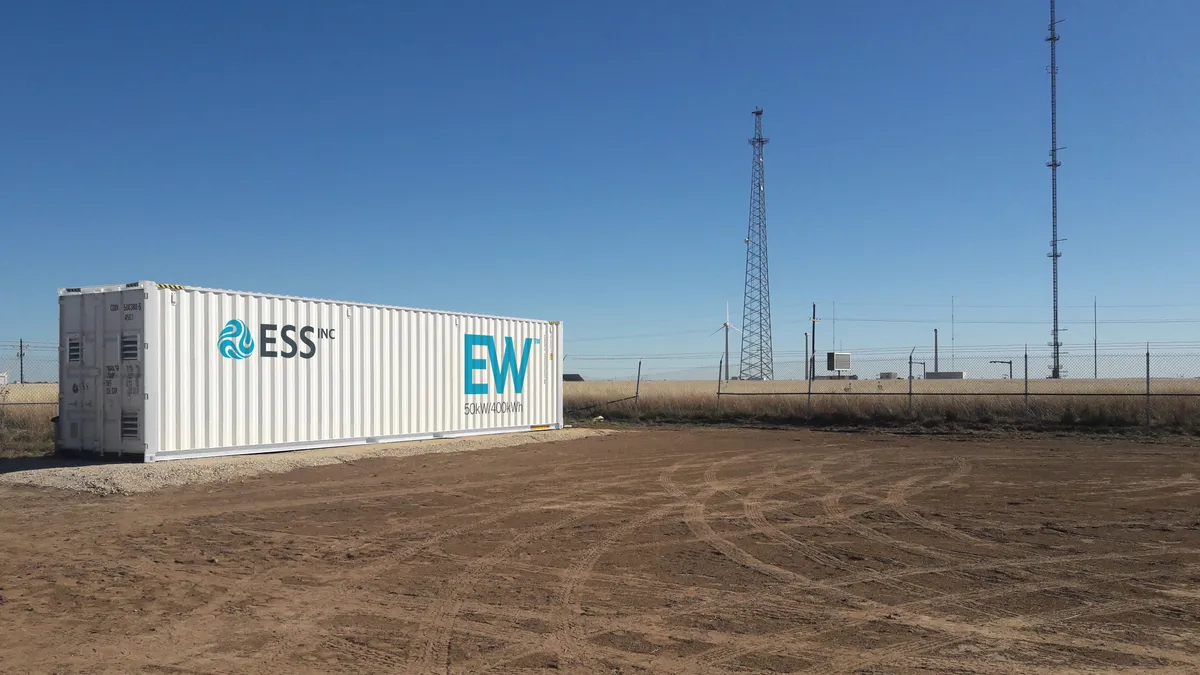Dive Brief:
-
Battery storage is on the cusp of a major growth spurt, according to a report by the U.S. Energy Information Administration (EIA). The number of large-scale battery storage systems operating in the U.S. increased 28% in 2019 and is likely to continue to grow based on preliminary 2020 data, according to the report.
-
Declining costs are driving increased adoption of battery storage outside of regions that have been early adopters, such as PJM Interconnection and the California Independent System Operator, according to the report, which found energy storage costs declined 72% between 2015 and 2019.
-
The combined capacity of U.S. battery storage projects could grow by 10 times beyond the 2019 figure between 2021 and 2023 to contribute 10,000 MW to the grid, according to the report. But according to the Energy Storage Association (ESA), accelerated growth within the industry over the last year could push that projection even higher.
Dive Insight:
If battery storage hasn't arrived yet, it's about to.
An EIA report published last week projected major growth for the storage sector in the years to come. But because the report relies on data from 2019, energy storage is likely to exceed the rate of growth projected by EIA, according to ESA interim CEO Jason Burwen.
"2020 was a huge year for the industry," Burwen said, noting that battery deployment tripled from 2019 to 2020. "Even though this report seems to indicate what was steady growth, it misses that 2020 was a real hockey stick moment where the rate of growth jumped quite significantly."
On top of this 2020 growth, Burwen said, the U.S. is set to triple or even quadruple battery deployment in 2021 so far.
Preliminary 2020 data collected by EIA shows a 458 MW increase in battery power capacity, more than double the previous record in 2016 and 66% more than total power capacity additions for 2019.
Vikram Linga, a renewable energy analyst at the EIA and one of the authors on the report, said that although the 2020 data on battery installations is not yet final, the preliminary numbers do align with Burwen's assertions. Utilities have currently reported the planned installation of more than 13,000 MW of battery storage by 2024, according to Linga and co-author Alex Mey, an economist for EIA.
Burwen agreed with the report that the primary driver of the current rate of growth is the falling cost of battery storage. Storage system costs fell at an average rate of 27% per year between 2015 to 2019, according to the EIA report. Additionally, both Burwen and the EIA noted that storage is increasingly paired with solar installations to take advantage of investment tax credits.
U.S. large-scale battery storage power capacity additions, standalone and co-located
But the rate of future growth could be further influenced by energy policy, particularly if Congress creates stand-alone incentives for storage projects, Burwen said. Further action at the federal or state level could also spur additional battery installations if it requires even greater levels of renewable energy to be deployed.
As emission standards for energy generation continue to tighten and the amount of renewable energy on the grid increases, Linga said, utilities' need for a low-emission alternative to gas peaking plants will increase in step.
"A textbook case for energy storage is to provide power when the sun isn't shining or the wind isn't blowing," Mey agreed.














